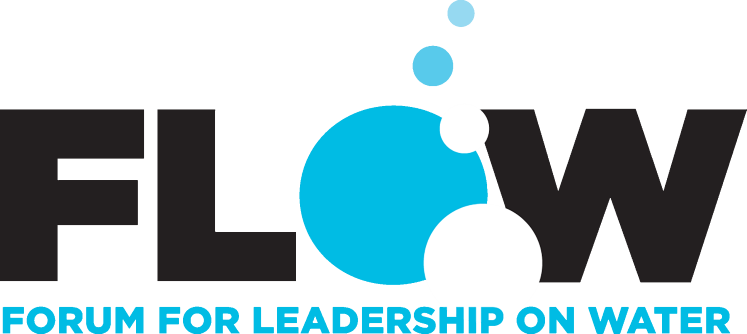Innovation at the Border
Murray Clamen | June, 2020
f you ask citizens of both countries what the initials 'IJC' stand for, most will have no idea. But they should: the International Joint Commission (IJC) – and the Boundary Waters Treaty that created it – have been in place specifically to prevent and resolve water-related disputes between the US and Canada for over a century!
Not enough people in Canada and the United States are aware that 40 percent of the border between these two countries is water and that over 300 rivers and lakes cross or are part of that border. And fewer still are aware of the Boundary Waters Treaty signed in 1909 between the United States and Great Britain (on behalf of Canada) to address some contentious water disputes that existed at that time. And if you ask citizens of both countries what the initials 'IJC' stand for, most will have no idea. But they should: the International Joint Commission (IJC) – and the Boundary Waters Treaty that created it – have been in place specifically to prevent and resolve water-related disputes between the countries for over a century!
One of the IJC’s more recent efforts, the International Watersheds Initiative (IWI), is an excellent example of how the IJC has been able to use the flexibility in both the Treaty and itself as an institution to remain innovative and adapt to new water management scenarios. The story of IWI helps shed light on what the IJC is, how it works, its importance to Canada-US relations, and the direction it needs to go to remain effective in the 21st century.
Genesis of the IWI
The IWI was first introduced in a 1997 IJC report entitled "The IJC and the 21st Century". This unique and important report was produced in response to a request from the Canadian and U.S. governments for ideas on how the IJC might best assist governments to meet the environmental challenges of the 21st century, including by looking at itself as an institution and proposing some new ways of working. The most important recommendation to come out of this remarkable assignment was to create international watershed boards along the border. The IJC envisaged these boards as a new approach to transboundary water management: rather than dealing only with high-level government action on water, these boards would take an integrated ecosystem approach through enhanced local participation and capacity.
The governments cautiously liked the idea, and in November 1998 asked the IJC to further define the framework under which these boards would operate. Since then the IJC has refined the concept into the current International Watersheds Initiative. What has the IJC learned in the 20 years since this idea was born and why is it important today?
Lessons from the IWI
Implementing a new water management idea usually involves overcoming challenges, and the IJC proposal to create international watershed boards was no exception. Bureaucratic and jurisdictional resistance stemmed from fears that these new institutional arrangements would strain already-scarce resources and from a general belief that existing institutional arrangements were working fine. In short, international watershed boards were seen as too big of a change, and one that would not be sustainable over the long-term.
IJC commissioners and staff had to work very hard over several years to overcome these challenges by carefully explaining, clarifying, and modifying the concept. Eventually, it was able to proceed incrementally as a pilot project. A key compromise was that, rather than creating a series of new boards, the capabilities of existing IJC boards were enhanced by building new and effective relationships. This approach – modifying existing boards rather than creating new ones – became the core idea of the international watershed boards concept and led to the rebranding of the concept into the current IWI.
Since these early beginnings, the IJC has now established two international watershed boards: the International St. Croix River Watershed Board in 2007 and the International Rainy-Lake of the Woods Board in 2013. Two other boards, the International Red River Board and International Souris River Board, are in the pilot stage and are close to becoming international watershed boards. The IWI has evolved and improved over the years, and the IJC has established formal procedures for proposing, approving, and funding IWI projects. The various achievements under the IWI are too numerous to mention, but include water quantity and quality monitoring systems, field surveys, numerical modelling, scientific analyses, literature reviews, organization of science forums, and outreach products. These accomplishments are outlined in more detail in the four IWI reports the IJC has submitted since its establishment.
Aside from these tangible benefits, why is the IWI so important? It is significant because it represents a unique way of interpreting a century-old treaty, allowing the IJC, together with national governments and their subnational jurisdictions (provinces and states), to function under the treaty while avoiding some of its cumbersome protocol (particularly the need to wait for references from the national governments to take action). The Treaty’s formal protocols are still important, but the lasting new arrangements established under the IWI have arguably allowed the IJC to achieve the true intent of the Boundary Waters Treaty better than ever. In the future, it is envisioned that all transboundary basins will be governed by international watershed boards. Achieving this vision will help ensure that the IJC is equipped to meet the challenge put before it in 1997: effectively helping governments address the environmental challenges of the 21st century.
For more analysis of the International Joint Commission, see The First Century of the International Joint Commission, a multi-author volume edited by Murray Clamen and Daniel Macfarlane. The book can be downloaded for free from the University of Calgary Press.
Dr. Murray Clamen holds an Adjunct Professorship at McGill University, where he assists with the Integrated Water Resources Management (IWRM) Masters Program and teaches a graduate-level course on Water Law and Policy.

